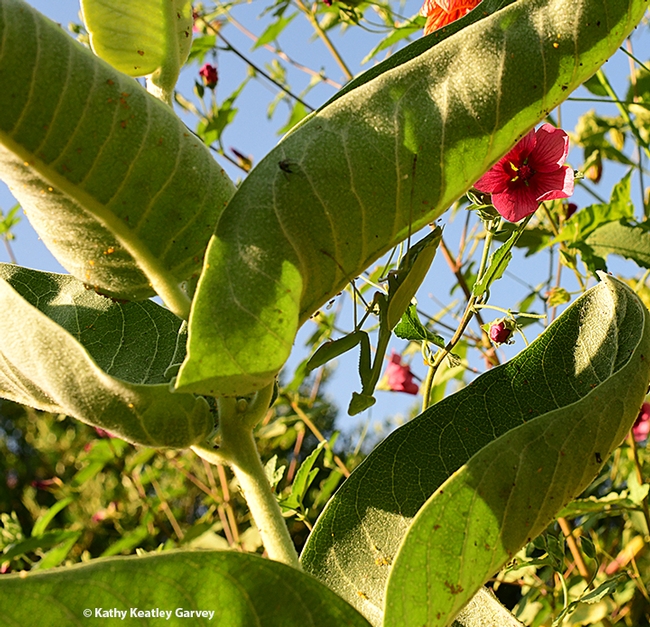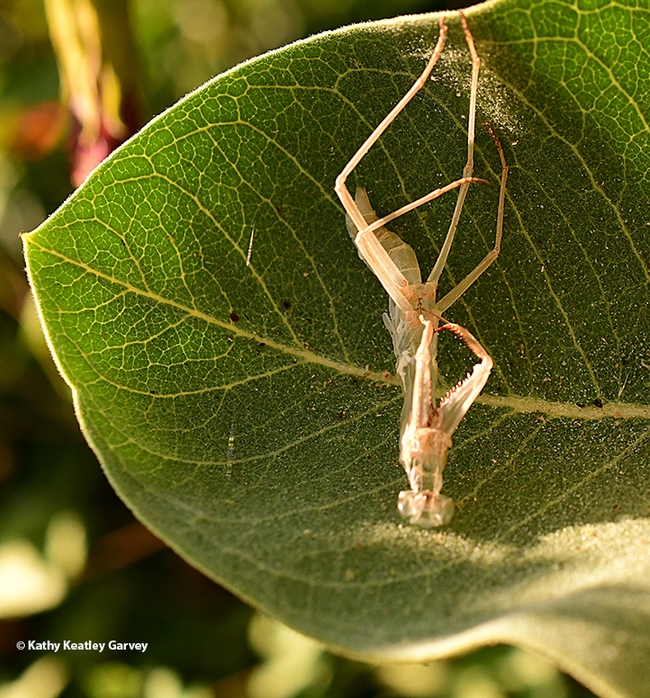Our showy milkweed (Asclepias speciosa) is putting on a show.
The towering plant--a good eight feet--anchors the garden as we patiently wait for monarch butterflies to arrive and lay their eggs.
It's mid-August and it appears the monarchs are not coming here to our little pollinator garden in Vacaville, Calif. Maybe we'll see some during their late summer or early fall migration--on their way to their overwintering sites along coastal California.
Meanwhile, the speciosa has more than its share of lady beetles (aka ladybugs) and aphids.
But now we have a new visitor, well, maybe a permanent resident.
A praying mantis, Stagmomantis limbata (as confirmed by mantis expert Lohit Garikipati, a UC Davis graduate and Bohart Museum of Entomology associate now attending graduate school in Towson University, Maryland) has arrived.
For the first several days, Ms. Mantis hung upside down and did not eat (at least in our presence). She watched the bees buzzing around but made no effort to snag one. We think she was yawning. "Okay, I know you're there. I don't care and I'm not hungry."
Then we found her exoskeleton on one of the speciosa leaves.
A mantid's "skeleton," you know, is outside its body and it's known as an "exoskeleton." It reminds us of a suit of armor, for protection, support and form (is it a "suite of amour" when love abounds?).
A young mantis eats and outgrows its exoskeleton and then it molts (sheds it). Scientists say some species of growing mantids may lose their exoskeletons as many as 10 times.
And, according to Garikipati, a mantis that has just molted may not eat for two or three days.
Did you hear that, bees?
So, bottom line, no monarchs on the milkweed.
But we do have assorted lady beetles, aphids, and one praying mantis and her exoskeleton.
Wait, correct that. Just one mantis. A breeze just swept away the exoskeleton.
Attached Images:

